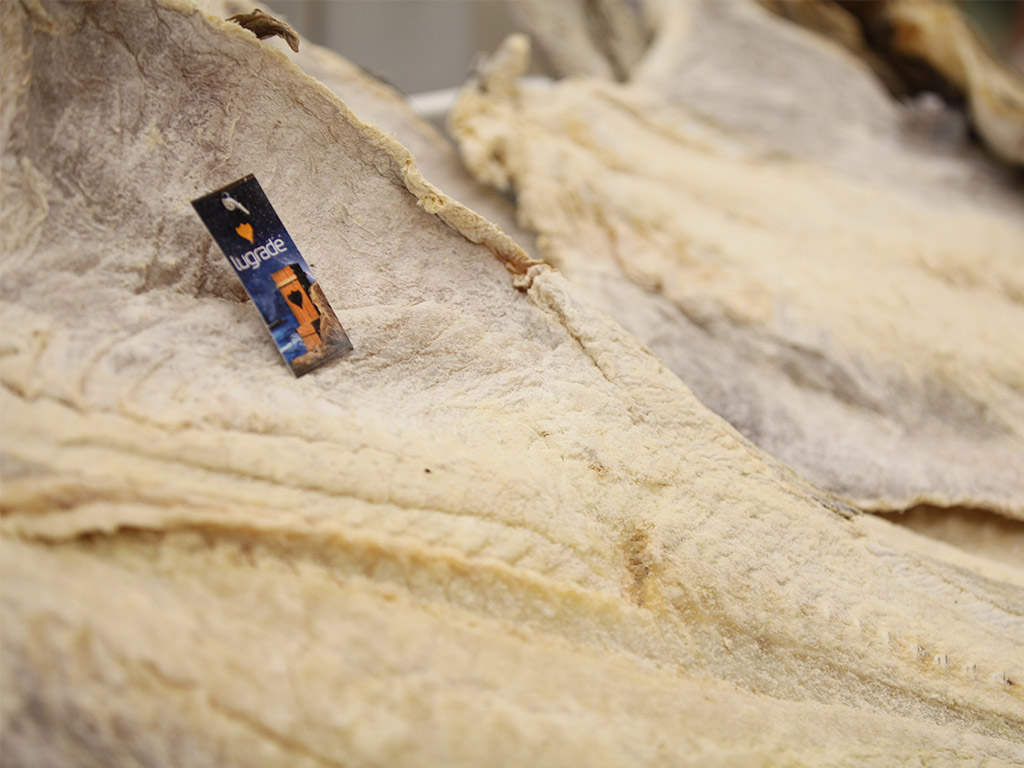The most important rule at the time of buying the “faithful friend” is drying! Whatever your recipe is, the secret is: well dried bacalao. Drying is an integral part of the bacalaocuring process, which consists in placing the fish in trays and then sending it to the drying tunnel. It is in the drying process that the excellence of the bacalaois established. At a maximum temperature of 22° C, continuously controlled, in which the bacalao remains for a period of time ranging from 36 to 120 hours depending on its specificity. This procedure may be repeated if it is found that the bacalao is not properly dried and may be intercalated by periods of drying and resting, depending on the type of curing that has to be done.
Drying is crucial to stabilize moisture levels in the fish and maintain the integrity of the fish according to the parameters established by law.
The Gadus morhua is the genuine bacalao. Some species of the same family may mislead the consumer, being considered bacalao fish. A right cut of the tail and three fins on the back set the difference between the genuine bacalao and its substitutes, such as saithe.
At the time of purchase, the consumer should always check the origin of the fish. Certified bacalao guarantees the highest quality. Lugrade recommends bacalao from Iceland, where quality parameters are maintained from capture to shipment through quality certification systems, namely the IRF (Iceland Responsible Fisheries), which establishes the crucial element for the quality and freshness of bacalao.
Then one should check that the bacalao is really dry. One of the most used tests and that has proven effective, is to hold the fish by the tail and verify if the same folds in the zone of the loin. If this happens, the bacalao is not well dried.
Another key feature when choosing the best bacalao is the colour. A too white bacalao does not mean that we are facing a quality bacalao. On the contrary, the bacalao must present a straw yellow coloration. Also note areas with a black or reddish colour. Buying should be avoided in these cases.
A question that sometimes causes some doubt is the choice between deep-frozen or dry salted bacalao. Everything has to do with the time available for the recipe collection: if you do not have time to soak the bacalao, choose to buy deep-frozen soaked bacalao. However, it is important to note that dry salted bacalao, after soaked, gains approximately 30% of its original volume, making it more profitable to cook, and in turn, the cost per kilo turns to be cheaper. Whereas dry-salted bacalao maintains its original flavour from the end of the curing to your plate, deep-frozen soaked bacalao has less flavour, since it has already been subjected to soaking and deep-freezing processes that remove its characteristic flavour.
